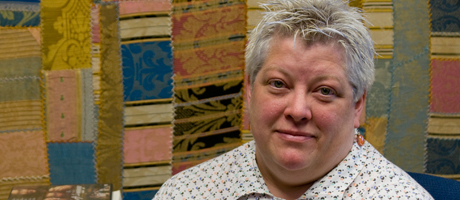By Rachel Muir
An iron and a cooler are the sum total of Cayo Gamber’s purchases of new items this year.
The university writing professor, along with her partner Sera Morgan, made a New Year’s resolution to limit their spending to food, medicine and “things-that-break and-must-be-fixed” in 2010. It’s an effort to minimize their carbon footprint and practice a more sustainable lifestyle, says Dr. Gamber.
And almost halfway though the year--far longer than most New Year’s resolutions last--they’ve kept to it.
“I’m at a time in my life when I don't really need a lot of new things, so that makes this effort easier,” says Dr. Gamber. “We have furniture, dishes, pots, pans, rugs, lamps and all of that. What we were purchasing were the extras -- the newly advertised item, the upgraded model and such.”
Still, it’s been a bit of an adjustment for the self-described bargain hunter. “I love sales and hunting through volumes of stuff for deals,” she says. “Shopping was a kind of a sporting event for us.”
But, she says, while she prided herself on making “excellent buys,” she didn’t think about the big picture. “I wasn’t concerned with the labor conditions, ecological compromises or market forces that went into those buys,” says Dr. Gamber.
The “nothing new year,” as Dr. Gamber calls it on her blog, doesn’t bar her from buying items second hand, and she sometimes frequents thrift stores. “But there just aren’t as many items to choose from, and the clothing that is there often is a horrifying kind of polyester,” she says.
Dr. Gamber also uses Amazon.com to find used items “of all sorts” and buys second-hand books at bargain basement prices whenever possible. “I love rescuing a book from oblivion -- the one-cent copy of X, Y or Z that was gathering dust in a used-book storage space,” she says.
The resolution has also inspired the couple to try their hand at making things. “Our forays into the world of crafts have been amusing,” says Dr. Gamber. “We tried to make soap and discovered, by the end of our effort, that each bar we had made probably cost us eight dollars.” Their experiment making candles resulted in a stockpile of “droopy tapers,” while mosaic pots proved so time consuming they only managed to make a few.
So, have they saved a lot of money?
Not really, says Dr. Gamber, but that’s at least in part because they’ve had to repair a faulty furnace and other appliances.
“What I have saved is time,” she says. “I used to look at every catalogue that came my way. I don't bother now, and I don't go to malls. I just order what we need online.”
The couple has allotted themselves a handful of “get-out-of-your-carbon-footprint-free cards” that would allow them to make a purchase. “We can play them if we find the perfect item, something that hasn’t happened yet,” she says. “When we aren’t out shopping, the temptation isn’t there as much.”
Dr. Gamber did bend the rules a bit to buy her 17-year-old daughter a new prom dress. “I had her look at used ones on the Internet first, but it’s hard to try on an online dress."
What happens at the end of the “nothing new year”?
“I think we will continue to question what we buy and why we are buying it,” says Dr. Gamber. The couple will also try to do more to support neighborhood stores, farmers’ markets and other local institutions, and examine their fuel consumption.
“I am trying to learn that many of the items I consume aren't really rewards or necessities,” says Dr. Gamber. “Unnecessary new shoes won't make me a better person no matter how cute they are.”


